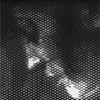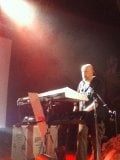Progarchives.com has always (since 2002) relied on banners ads to cover web hosting fees and all.
Please consider supporting us by giving monthly PayPal donations and help keep PA fast-loading and ad-free forever.
/PAlogo_v2.gif) |
|
Post Reply 
|
Page <1 3435363738> |
| Author | ||||
Dean 
Special Collaborator 

Retired Admin and Amateur Layabout Joined: May 13 2007 Location: Europe Status: Offline Points: 37575 |
 Posted: October 20 2013 at 18:59 Posted: October 20 2013 at 18:59 |
|||
This isn't a similar situation at all
Modern CD players use the same sampling speeds as they have always done, 44.1KHz, the accuracy hasn't changed.
There is no loss of phase information in a sampled signal until you exceed the nyquist point (and that's inaudible).
Soundstaging is governed by left-right channel separation and has nothing to do with sampling (or phase).
|
||||
|
What?
|
||||
 |
||||
Hercules 
Prog Reviewer 
Joined: June 14 2007 Location: Near York UK Status: Offline Points: 7024 |
 Posted: October 21 2013 at 06:11 Posted: October 21 2013 at 06:11 |
|||
|
Sampling size hasn't changed for CD players? I'm amazed - I must check my data more carefully. I'm new to CD players (only bought my first one 2 months ago).
Pixel size surely must affect computational capacity; smaller pixels equals more channels equals more information to be processed. When we wanted to upgrade the university observatory's CCD detection systems in the early 90s to a state of the art system to reduce pixellation in images, we had to wait until the departmental computer systems were upgraded (we were still using Sinclairs and BBCs!) to cope or link into the university's main computer.
As for the loss of phase information, as I've always understood it (and I admit this is not my specialist field at all, so I'm out of my comfort zone and would welcome correction if I'm wrong) the Nyquist point is half the sampling rate - ie c22kHz. Whilst this is inaudible to humans, it is well within the range of harmonics in music and it is certainly theorised that the presence/absence of inaudible higher harmonics affects the quality of music - certainly my colleagues in the acoustics department used to hold that this was true. Also, whilst left/right information has nothing to do with phase, that's nothing to do with the limitations of CD players which are actually fine in portraying a lateral soundstage. It's the front to back soundstage - the illusion of 3D and "space" round musicians where they fall down. Why this is, I'm not qualified to say - but I'd always thought loss of phase information was a likely suspect; clearly that's one pet theory shot down. But the best thing about CCDs is that I stopped having to spend the day in the processing room and end up coming home smelling of fixer! |
||||
|
A TVR is not a car. It's a way of life.
|
||||
 |
||||
Dean 
Special Collaborator 

Retired Admin and Amateur Layabout Joined: May 13 2007 Location: Europe Status: Offline Points: 37575 |
 Posted: October 21 2013 at 06:53 Posted: October 21 2013 at 06:53 |
|||
CDs are encoded to Red Book Standard at 44.1KHz, the sampling rate cannot be change on play back. There is a lot of lay-confusion regarding Sample Rate (aka speed), Bit Rate, Data Rate, Over-sampling, Sub-sampling and Read Speeds.
Sure, but that's not the technical limitation on making them in higher-resolutions. When post-processing still image data, such as that from an astronomical CCD sensor the actual, computational speed is irrelevant - if it took four seconds to capture the image and a week to process it that's how long it took. You can see this on any modern digital camera - regardless of the exposure time (which can be 1/4000th of a second) the processing of the sensor data in the camera (converting to JPEG format and saving it to Flash-card) can take several seconds.
Supersonics can affect the sonic part of the signal by "beating" with another supersonic signal to produce an audible sidetone harmonic (hetrodyne effect), however this audible signal was also present in the recording, so the upper frequencies can be discarded without loosing this sidetone/harmonic effect. You cannot hear supersonics - you can only hear the effects of them, if the effects are audible they will be recorded in the audible part of the spectrum so the inaudible part is redundant.
The 3D illusion is equally as present from CD as it is from vinyl. The 100% channel separation that CD affords should in theory make this 3D illusion even stronger as the interaural differences are better defined and better controlled.Vinyl can only achieve channel separation of around 25dB, which is pretty poor. Any claims of front-to-back separation is purely subjective as this is not a real phenomenon as such (front-to-back is simply relative volume level and dynamic range). |
||||
|
What?
|
||||
 |
||||
Catcher10 
Forum Senior Member 

VIP Member Joined: December 23 2009 Location: Emerald City Status: Offline Points: 17498 |
 Posted: October 21 2013 at 22:58 Posted: October 21 2013 at 22:58 |
|||
|
I will not call it 3D effects, but that can be a good descriptor....It does happen, how or why does not matter to me. Be it electronically, digitally, scientifically, audiophilally
I have many, many examples like what Hercules states happens where the digital content on the CD does not have the same wide/front to back perception as the same content on vinyl does....The most immediate that comes to mind is DSOtM. The "clocks" are all over my room on every wall, I am surrounded by ringing. The CD does not have that same musical perception, ohh its nice but simply not as spatial. The water noise at the end of Marillion's Brave on the vinyl edition is "liquid" sounding, I hear the waves going front to back and little water trickles in each channel....The CD version is just flat with some side to side but no depth of water noise. The recent Haken album The Mountain, the barbershop harmony vocals on the begining of "Because Its There" is another example of how the CD version does not compare to the vinyl version, the vocalists are in my room, the CD they are just coming out of my speakers with a really good sound but no depth. Call it a phenomenon or volume level and dynamic range...I don't care. It happens more on vinyl than CD in my case and on my system...Which is all that matters as I cannot convince anyone here, unless you were to actually be sitting with me as I listen, which you are more than welcome to! Volume level of different instruments must be a part of it, during the mixing to give that perception of front to back sound or portions of music that sound more in the background than in front. That mastering technique maybe is what is lost, that special touch that a good sound mixer/engineer was doing to give that aural feeling. Someone needs to clone Bob Ludwig......George Marino was another who did a fantastic job, sadly he is gone.
|
||||
  
|
||||
 |
||||
stonebeard 
Forum Senior Member 

Joined: May 27 2005 Location: NE Indiana Status: Offline Points: 28057 |
 Posted: October 21 2013 at 23:57 Posted: October 21 2013 at 23:57 |
|||
I would probably call it different mixes based on release format, because it's the only option that I think could realistically have that effect. What you're talking about is "panning" and that generally doesn't change once the album is mixed, regardless of format. If it's re-released then it can have a wider or narrower stereo field or even a totally new mix with new panning and depth, but I'm tempted to think what you're describing is good old-fashioned bias based on familiarity with your listening environment. But, it is not uncommon (if the artist/record company can afford it and cares about it) to have a CD release with less dynamic range and a narrower stereo field and a simultaneous vinyl release with just the opposite. It's not that they couldn't do it for the CD, but the listening environment and expectations for 180-gram vinyl can be enought to make separate masters for vinyl records. But keep in mind mastering is really just fine-tuning the final product. You can't change individual instruments in mastering unless the engineer wants the stems for each instrument or group of instruments. But, probably not unless it's a major label, major release. |
||||
 |
||||
moshkito 
Forum Senior Member 
Joined: January 04 2007 Location: Grok City Status: Offline Points: 16165 |
 Posted: October 22 2013 at 08:48 Posted: October 22 2013 at 08:48 |
|||
|
Hi,
There are some albums, that I still think sounded way better on vinyl than they ever did on CD, remastered, or pooped on! Some of these were very "sonic" in the work, and the remastering seems to have taken out the "expanse" of the inner vision, by moving the "instruments" around some. All of a sudden you can only see a "studio" and not the scenery in the movie, and this is my number one complaint about some of the remixes that Steven Wilson has done of King Crimson, and anyone else.
It has taken the "humanity" and "vision" out of the music for me!
Thus, it could be said that analog had something going for it, but time, has rendered that process gone and no longer pheasable or used. That is the history of just about anything anyway!
Here are a few:
Tangerine Dream - Phaedra
Seventh Wave - Things to Come
Focus - Moving Waves
King Crimson - In the Court of the Crimson King
Klaus Schulze - Mirage
Robert Schroeder - Floating Music (the LP only as it could play at 33 and 45 !!!!)
Edited by moshkito - October 22 2013 at 08:54 |
||||
|
Music is not just for listening ... it is for LIVING ... you got to feel it to know what's it about! Not being told!
www.pedrosena.com |
||||
 |
||||
octopus-4 
Special Collaborator 

RIO/Avant/Zeuhl,Neo & Post/Math Teams Joined: October 31 2006 Location: Italy Status: Offline Points: 13358 |
 Posted: October 22 2013 at 08:50 Posted: October 22 2013 at 08:50 |
|||
|
I would add Atom Heart Mother to the list.
|
||||
|
Curiosity killed a cat, Schroedinger only half.
My poor home recorded stuff at https://yellingxoanon.bandcamp.com |
||||
 |
||||
moshkito 
Forum Senior Member 
Joined: January 04 2007 Location: Grok City Status: Offline Points: 16165 |
 Posted: October 22 2013 at 09:02 Posted: October 22 2013 at 09:02 |
|||
Absolutely! And tell Roger he is wrong, and out of line putting it down! He's only trying to make sure Ron Geesin doesn't get a dollar! Like he couldn't even afford a nickel or two! Edited by moshkito - October 22 2013 at 09:03 |
||||
|
Music is not just for listening ... it is for LIVING ... you got to feel it to know what's it about! Not being told!
www.pedrosena.com |
||||
 |
||||
dr wu23 
Forum Senior Member 

Joined: August 22 2010 Location: Indiana Status: Offline Points: 20468 |
 Posted: October 22 2013 at 10:46 Posted: October 22 2013 at 10:46 |
|||
|
I'm no expert in analog or digital sound but I simply don't 'hear' this better quality in vinyl over cd's on the albums named...and I have them in both formats. I grew up with vinyl and still own over 400 pieces but I rarely play the vinyl anymore. Most have a 'muddy' sound imo and can be easily damaged too.
I wonder if this is a 'perceptual. or psychological issue more than any actual quality issue.
|
||||
|
One does nothing yet nothing is left undone.
Haquin |
||||
 |
||||
The.Crimson.King 
Forum Senior Member 

Joined: March 29 2013 Location: WA Status: Offline Points: 4591 |
 Posted: October 22 2013 at 11:11 Posted: October 22 2013 at 11:11 |
|||
|
For me, any advantage vinyl might have in the spatial/front-to-back regions is nullified by the noisy-ness of the medium (pops, clicks, scratches, etc) and the fact that every time you play it, the medium is degraded to some degree. I completed the conversion of my whole collection from vinyl to CD in the mid 90's and have never regretted it for a second.
|
||||
 |
||||
Catcher10 
Forum Senior Member 

VIP Member Joined: December 23 2009 Location: Emerald City Status: Offline Points: 17498 |
 Posted: October 22 2013 at 13:04 Posted: October 22 2013 at 13:04 |
|||
I purchased the KC Red remastered vinyl version few months ago and I don't like it that much from a musical perspective. There is too much noise reduction going on, its too restrained in places where it should be brighter......Too much of a thick sound. The others I have, ItCOtKC and Lizard, are much nicer....The digital fixing of these abums is too much. It is a tough trade off, removing something always removes something you did not want removed, which can take away from the music, so I can agree with you. Steven Wilson is still doing a fantastic job with his own stuff especially the Raven album on vinyl is simply magical. He did an excellent job with Marco's drumming and also Adam Holzman's keys, the whole sound is a winner! Its clear that at least he is paying attention with great detail how he is recording knowing in his mind the medium will also include vinyl pressings.
|
||||
  
|
||||
 |
||||
Dean 
Special Collaborator 

Retired Admin and Amateur Layabout Joined: May 13 2007 Location: Europe Status: Offline Points: 37575 |
 Posted: October 22 2013 at 18:16 Posted: October 22 2013 at 18:16 |
|||
|
Trying to muster enough enthusiasm to post replies and failing.
@Drew - spot on
@Doug - Probably my feelings too
@Dennis - I don't believe that vinyl has any advantage in the spatial/front-to-back imaging, quite the opposite.
Front -to-back imaging is controlled by volume level, EQ and echo - it is essentially monaural so phasing and channel seperation and all that other technical mumbo-jumbo is almost irrelevant. If you think how something sounds in the distance when compared to close up then that is what you would need to mimick in the studio: obviously things further way sound quieter so you turn the level down, lower frequencies do not travel so well so the tone changes to have less bass (EQ) and those remaining higher frequencies bounce off things before they get to you (echo). When mixing a piece of music you want that to be on a more subtle and intimate scale so that you place the listener in the soundstage rather than 500 metres away from it. In practice you want to create some space for each instrument so they are not muddled and muddied by each other - and that's where the "almost irrelevant" from earlier comes into play because the left-to-right imaging can help here. Edited by Dean - October 22 2013 at 18:17 |
||||
|
What?
|
||||
 |
||||
Dean 
Special Collaborator 

Retired Admin and Amateur Layabout Joined: May 13 2007 Location: Europe Status: Offline Points: 37575 |
 Posted: October 22 2013 at 18:40 Posted: October 22 2013 at 18:40 |
|||
|
ps:
@Josť - 25dB channel separation of vinyl is a reality - you cannot improve on that, you can simply accept it. 25dB is aproximately a signal ratio of 1:18 .. this means that for every 18 volts coming out of the left channel 1 volt of that will come out of the right channel and there is nothing you can do about it. If we imagine that your speakers are 18 feet apart then any sound that is panned fully to the left will appear to be coming from the area 1 foot to the right of the left speaker (or there abouts) - which is just fine and nothing to worry about because the accuracy of our direction-finding ability isn't much better than that. Edited by Dean - October 22 2013 at 18:41 |
||||
|
What?
|
||||
 |
||||
Hercules 
Prog Reviewer 
Joined: June 14 2007 Location: Near York UK Status: Offline Points: 7024 |
 Posted: October 23 2013 at 08:22 Posted: October 23 2013 at 08:22 |
|||
Dean, you are clearly far more expert in the digital technology of CDs than I am - my professional expertise was in mathematical/theoretical astrophysics, not electronics/acoustics and my Physics degrees date from the early 70s so are well out of date - but I suggest you actually leave aside the specifications and listen to the evidence of your ears. For example, on the original recording of Another Night from Moonmadness, on vinyl the drums appear to be coming from well behind the vocals and guitar. On CD, they all appear completely on a line between the speakers. I can't listen to Moonmadness on Cd as the spacy feel of the music is diminished. On Time from DSOM, the clocks appear to be coming from a huge space behind the speakers on vinyl, but on CD - they just sound to be coming from a linear soundstage with no space. You may not have heard this; if so, it may simply be that your vinyl playback equipment is not up to the level needed. I have heard both a Technics SL 1200 and a Linn LP12 recently and was startled by the very poor soundstaging which was no better than my CD player, but a Nottingham Audio Annalog and my own Pink Triangle Anniversary (which are more sophisticated and upmarket models) wiped the floor with it. I do not know why vinyl can do this, but my ears tell me it can. And I believe them.
|
||||
|
A TVR is not a car. It's a way of life.
|
||||
 |
||||
progbethyname 
Forum Senior Member 

Joined: July 30 2012 Location: HiFi Headmania Status: Offline Points: 7750 |
 Posted: October 23 2013 at 08:28 Posted: October 23 2013 at 08:28 |
|||
I agree with some of what you said, but not about the 'Book' point. I don't gotta smell it to feel originality or authenticity of what I am reading. I think that is a little over the top. 
|
||||
|
Gimmie my headphones now!!! 🎧🤣
|
||||
 |
||||
progbethyname 
Forum Senior Member 

Joined: July 30 2012 Location: HiFi Headmania Status: Offline Points: 7750 |
 Posted: October 23 2013 at 08:35 Posted: October 23 2013 at 08:35 |
|||
Not missing that fence nail huh?  Dennis, I do not blame you one bit. Dennis, I do not blame you one bit. I've now heard and seen both sides to the analogue and Digital coins, and I feel Digital is my prefered sound format....by a long shot actually. |
||||
|
Gimmie my headphones now!!! 🎧🤣
|
||||
 |
||||
Snow Dog 
Special Collaborator 

Honorary Collaborator Joined: March 23 2005 Location: Caerdydd Status: Offline Points: 32995 |
 Posted: October 23 2013 at 09:43 Posted: October 23 2013 at 09:43 |
|||
Mine too
|
||||
 |
||||
Catcher10 
Forum Senior Member 

VIP Member Joined: December 23 2009 Location: Emerald City Status: Offline Points: 17498 |
 Posted: October 23 2013 at 11:11 Posted: October 23 2013 at 11:11 |
|||
I am not interested in specs..because who did it, what was the testing environment/equipment...so on. I have seen cartridges that show 28-30dB at 1kHz, the one I currently use is spec at 25dB at 1kHz. I totally understand the theory behind it...I don't question that nor do I ask for more nor do I pay much attention to what CD/Digital claims.....Because as you state our ears/heads can only manage about 20-25dB of separation, so anything more is overkill and you don't experience it anyway, I am perfectly fine with 25dB.....it mates very well with my head Call it what you want spatial separation, panning, echo......Those effects can also be increased/decreased with speaker placement, room acoustics, furniture, flooring....so on. If I were to put my system in someone elses room it may simply sound boring and lifeless or could sound even better..dunno. And to be clear I am not one of those room treatment people..I don't have baffles hanging in my room, I will make no concessions in my room to "better" my audio sound, vinyl or CD.....Maybe they work but I am not interested in trying it. The only thing I know is what my ears tell me....I have a lot of vinyl that sounds bad and I have a lot of CD that sound bad, IMO a bad CD is much worse than a bad vinyl, because of the detail that CD can expose its almost unlistenable. I can manipulate my tonearm, I can swap out a cartridge for a warmer sounding one or a brighter sounding one or a very neutral sounding one....I can swap out a phono amp and even play with cartridge loading. At least I have options to try and make a bad sounding vinyl tolerable....but with bad CD I press play and pray, that's it, but it will always sound bad. I have said again, back on page 1-2 that I don't argue that digital is the best recording method. But my only testing method is what my ears tell me in my listening room on my sofa on my system..and I am pretty darn happy!!  Edited by Catcher10 - October 23 2013 at 11:12 |
||||
  
|
||||
 |
||||
Dean 
Special Collaborator 

Retired Admin and Amateur Layabout Joined: May 13 2007 Location: Europe Status: Offline Points: 37575 |
 Posted: October 23 2013 at 13:35 Posted: October 23 2013 at 13:35 |
|||
Drew already answered that specific point :-
And I see no reason to go looking for any other explanation, and certainly won't go looking for it in equipment setups and whether one platter connected to an electric motor can possibly give a better "soundstage" to different platter connected to a different electric motor. As long as we have graduated beyond plastic auto-changer turntables and dynamic "crystal" pickups with a saphire styli then the subjective nuances and subtleties of different set-ups simply do not interest me. You perceive a difference between a Linn LP12 and a Pink Triangle Anniversary, I would wager another listenner would perceive the opposite to be "true", while others would say my Thorens TD160 is better/worse (and no, that's not my only TT, nor is it my preferred TT, it just happens to be the only one I've mentioned in this thread).
You would not countenance this "perception" approach to any other technological, scientific or engineering discipline so why apply it to audio engineering? The Moon and the Sun are the same size in the sky ergo I perceive them to be the same physical size and same spacial distance from Earth, and I don't care what "science" says in the "technical specs" of those celestial bodies... Rigel is brighter than Castor so I perceive it must be close to Earth... Mars is in the constellation of Cancer so since I am an Aries I perceive tomorrow will be a not good day for taking on extra work... Sure they are absurd examples to make a point, but that is the point I am making after all - I do not make any claims that one system or technology is better than any other. I simply point out that when other people make bold subjective claims that the objective science does not support their claims.
|
||||
|
What?
|
||||
 |
||||
The.Crimson.King 
Forum Senior Member 

Joined: March 29 2013 Location: WA Status: Offline Points: 4591 |
 Posted: October 23 2013 at 13:49 Posted: October 23 2013 at 13:49 |
|||
For the record, I don't believe that vinyl has any spatial/front-to-back imaging advantages either. My point was that even "if" this was a huge advantage for vinyl - as many hardcore vinyl fans claim - it would be more than offset by the click/pop/scratch noise degradation of the medium
 |
||||
 |
||||
Post Reply 
|
Page <1 3435363738> |
| Forum Jump | Forum Permissions  You cannot post new topics in this forum You cannot reply to topics in this forum You cannot delete your posts in this forum You cannot edit your posts in this forum You cannot create polls in this forum You cannot vote in polls in this forum |